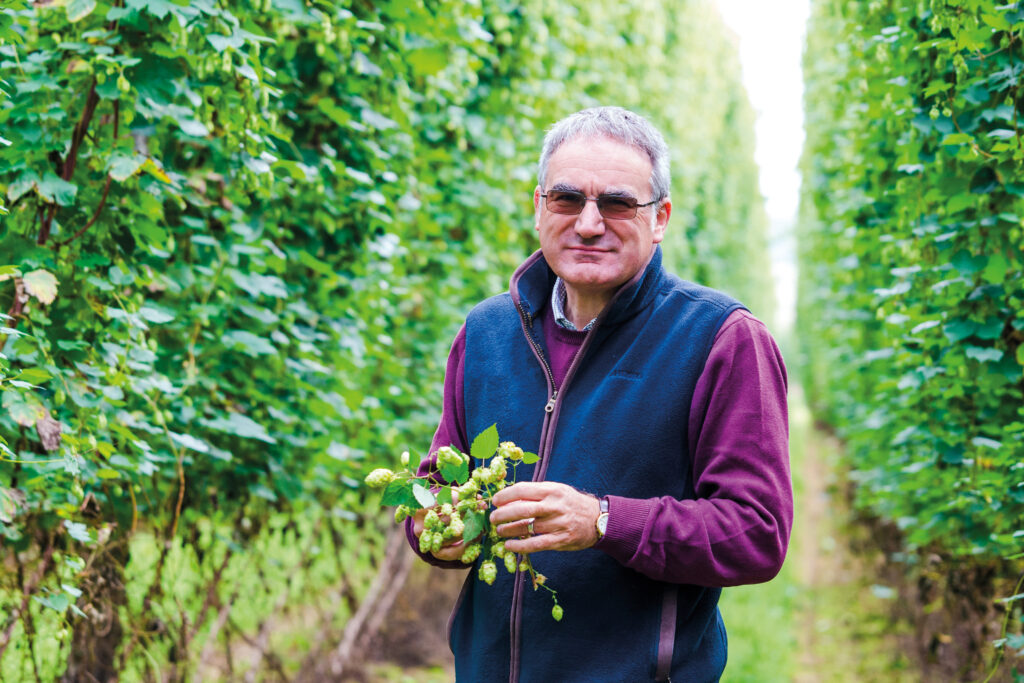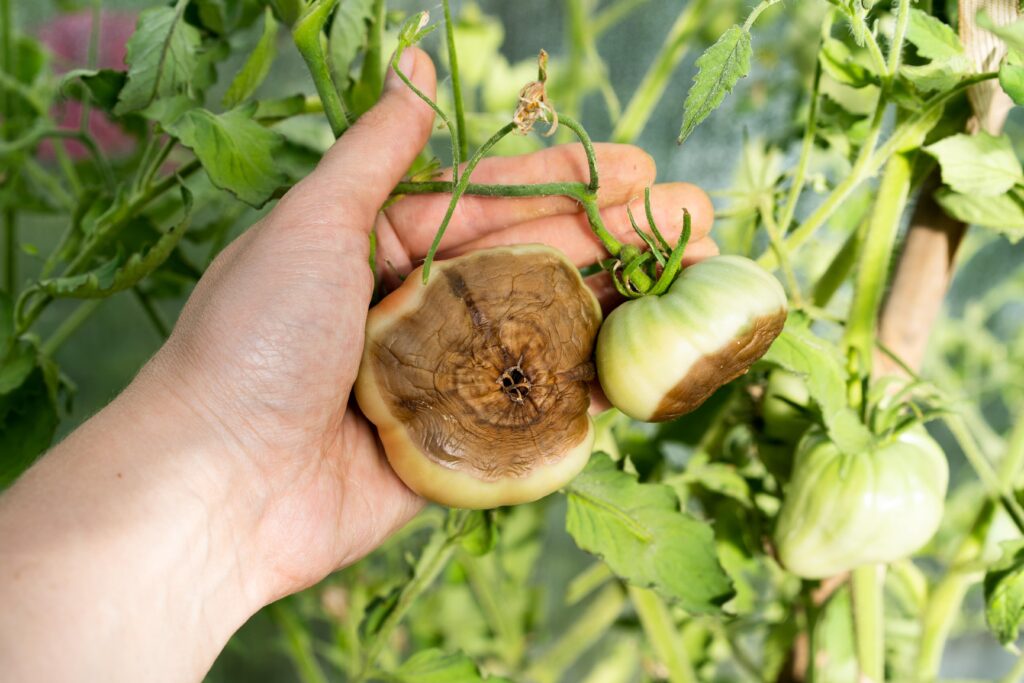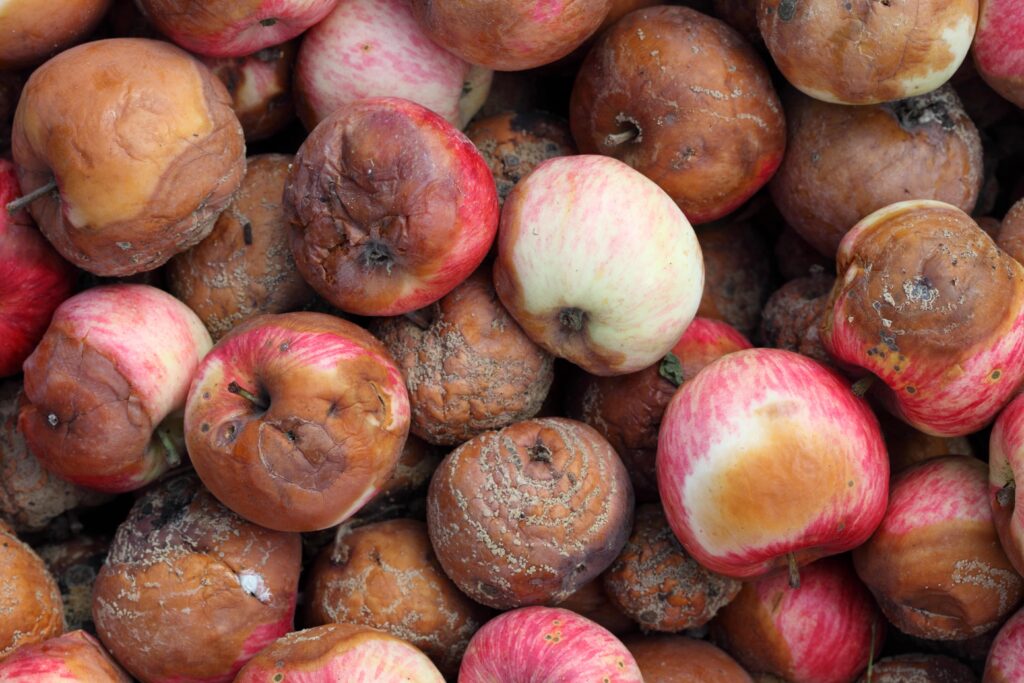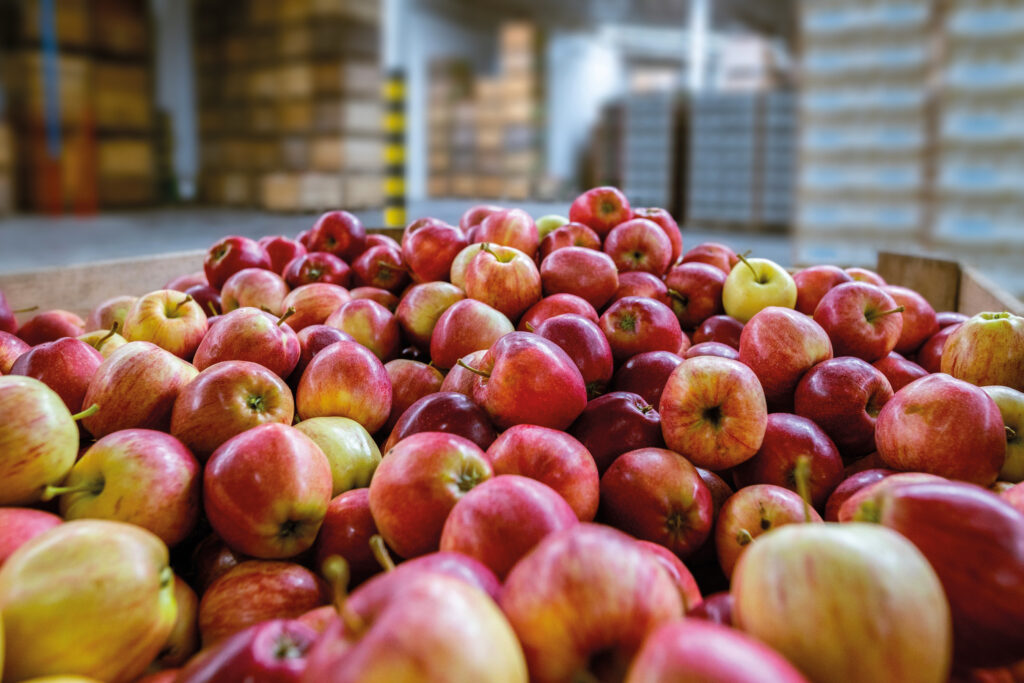Storage quality starts in the field
22nd August 2023
Preserving harvest quality in stored fruit has long been the focus for many growers, but with margins under strain from higher costs, the need to maximise returns has arguably never been greater. Fruit & Vine gets some expert advice on ensuring storage success.

Jonathan Blackman, horticulture technical manager for Hutchinsons
When storing fruit, principally top fruit, for any length of time, “grade out is king”, Hutchinsons horticulture technical manager, Jonathan Blackman says.
“If you’ve picked a whole bin of apples, you want all to be sold at top price. If 30% get thrown away, or turned to juice, the income per bin is considerably reduced.”
While there are effective options for protecting quality in store and beyond, the initial focus must be on growing the best quality produce, he says. “Optimising storability and grade out begins in the field.”
Tip 1: Prevent disease
Effective disease control is fundamental to reducing storage issues, especially in wetter seasons, Dr Blackman says.
For apples, the main crop going into longer-term storage, the AHDB Apple Best Practice Guide contains useful best practice information on managing crops and tackling storage issues.
Nectria eye rot
The main threat to apples in many seasons is nectria eye rot (Neonectria ditissima), caused by the canker fungus, with Gala particularly susceptible, he notes. Infection occurs through the calyx, or stalk end, at blossom time, and is best managed with integrated chemical and cultural controls.
Gloeosporium rot
Another target at flowering is gloeosporium rot, although this is less problematic than in the past, when Cox was widely grown, and was particularly susceptible. “Gloeosporium can infect apples later in the season, so protection may be needed before harvest.
Conduct a rot risk assessment
Base pre-harvest options on rot risk assessments conducted at flowering, and pre-harvest, considering factors such as variety, weather, and disease history. Phytopthora is a soil-borne disease, so in a wet harvest growers are advised not to pick from low branches where disease could have splashed onto fruit.
Dr Blackman says disease infection risk is generally higher after wet flowering periods, and increases further in unsettled conditions pre-harvest. This is therefore another important fungicide timing, to protect crops before being picked and stored. The focus is mainly covering for issues such as gloeosporium, brown rot, botrytis (mainly pears rather than apples), phytophthora rot, penicillium rot (blue mould), and fusarium.
“With no post-harvest fungicides authorised to reduce rots, generally, whether it’s apples and pears, or stone fruit like plums and cherries, rot control programmes must now focus on two main timings; flowering when diseases can get in, and pre-harvest,” he says.

Tip 2: Nutrition focus
While wet seasons heighten disease risk, very dry weather can also be challenging, as last summer proved.
Dr Blackman says physiological issues, such as bitter pit and skin necrosis, were more evident in 2022, often related to crop nutrition, notably calcium deficiency.
Calcium is a crucial component of cell walls in all fruit, so any deficiency weakens cells, potentially causing skin and flesh disorders, and allowing secondary rot in, he says. “Calcium moves through the transpiration stream in plants, so any reduction in water movement, reduces calcium flow.”
Blossom end rot in tomatoes is a classic example of calcium deficiency, occurring at the calyx end of the tomato when the plant has been unable to transport calcium to the very end of the fruit. Early in the season, strawberries can also experience ‘tip burn’ where calcium has not reached the leaf end and cell walls have collapsed.
“Even if there’s plenty of calcium in the soil or substrate solution, that doesn’t necessarily mean it’s getting to where you want it. But, applying foliar calcium ensures it is absorbed directly into the plant tissue, bypassing the need for the plant’s transpiration system to move it there.”
Research shows even firm varieties like Jazz can benefit from applied calcium for quality reasons.
Foliar calcium applications typically begin around flowering, or just after, as this is when cell division occurs, and cell strength is determined, Dr Blackman says.
It can be particularly beneficial in strawberries and blueberries, for fruit firmness, helping improve shelf life and robustness through the supply chain. “Breeding programmes build robustness into crop genetics, but foliar calcium is an important tool.”
Other nutrients
Boron is another major component of cell walls, also supplied via the transpiration stream.
“It’s rare to see boron deficiency in apple trees, but optimising levels around flowering will maximise cell wall strength, which improves pressures at harvest, storability and reduces risk of flesh breakdown,” says Dr Blackman. Zinc is also very important in cell division, particularly in apples.
In certain apple varieties, attention should be paid to the potassium to calcium ratio, as excessive potassium can reduce storability. “There’s a relationship between potassium and magnesium in soils, so while soil tests may show adequate potassium levels, a high Mg index can antagonise its uptake.
“Fruit, or leaf analysis is therefore a really useful tool to make sure nutrients are getting into the plant.”
In apples, fruit analysis is best done one to two weeks before harvest, so results can help determine storability, he adds.
The Omnia nutrition module for apples helps growers plan balanced nutrition programmes, featuring a built-in system to calculate fertiliser requirements for P, K, and Mg, based on crop offtake and soil analysis, that can be refined according to leaf analysis.
“We’re aiming to achieve even quality and yield across the whole orchard to minimise grade out. Precision will help with that.”
Tip 3: Balancing act
Alongside balanced nutrition, crop load can also impact storability, Dr Blackman continues.
Juggling the competing needs of stimulating healthy, productive, plant growth, versus maximising nutritional content of fruit, can be tricky though.
In a light cropping apple orchard with few blooms, for example, it may be necessary to regulate excessive growth, to limit the “pull” of calcium into leaves rather than fruit. Conversely, in a heavy-cropping orchard, the transpiration pull from leaves is lower, and there are more apples to supply, therefore applying foliar calcium can be very important.

Tip 4: Dealing with extreme weather
The UK generally has good growing conditions, without the extremes of other fruit-producing countries, such as North Africa, California, Australia, or the Mediterranean.
However, as climate changes, so the resilience of fruit production must improve, partly by growing varieties more suited to extremes.
“A big change in apples recently is that the UK now grows Pink Lady, a variety many previously thought could never be grown to the required standard here.”
Many new varieties, such as Cameo, Jazz and Magic Star, are firmer fleshed, so are better suited to storage, but it is worth noting that many bred for hotter climates can face different challenges when grown in the UK. Gala and Jazz, for example, are susceptible to apple canker, and Nectria eye rot.
“Understanding the impact of climate change on storability and shelf life of new varieties is important.”
Dr Blackman suggests there may be opportunities to use biostimulants during times of stress to improve crop physiology and disease defence, potentially benefitting fruit quality and storability. “But we need to know what products do, and when they are best applied.”
Tip 5: Preserving harvest quality
A major factor affecting post-harvest storage, is timely picking, says Stephen Tully, director of horticultural advice company, Landseer.
“Leave it too late, apples go softer on the trees, and if you put poor quality produce into the store, it won’t get better.”
Careful crop monitoring and testing quality (starch and brix) leading up to harvest can help growers plan when crops will be ready for harvest, and prioritise labour and picking schedules. Dry matter is a particularly useful indicator of storability, with higher DM crops generally better suited to longer-term storage, he notes. “Once harvest starts, get as much quality fruit into store as quickly as possible.”
This often requires juggling varietal requirements, especially as club varieties have become more popular, adds Stephen’s father and Landseer managing director, Mark Tully. “You may need to pause picking one variety and move to another to ensure fruit enters store in optimal condition.”
Once crops are in store, crop temperature must be reduced quickly, unless the crop has been under stress, when a more considered gradual cooling should take place.
“Growers spend five to seven months nurturing fruit on the tree, and can spend up to 10–11 months managing it in store, so it is important to get storage right,” says Stephen.
These basic principles for preserving quality can be supported by using SmartFresh, for which Landseer are UK agents, assisted by Hutchinsons as key service providers.
The product is similar to ethylene, a naturally occurring hormone that causes fruit to ripen. SmartFresh interacts with ethylene-sensitive sites in the fruit to manage its response to internal and external ethylene sources. This puts ripening “on hold” so that softening and over-ripening occur much more slowly.
“Apples are climacteric fruit, so as they get closer to harvest, they produce ethylene that signals fruit to start breaking down cell walls,” Mark Tully says. “Depending on variety, this can cause superficial scald, external browning, loss of green colour. Smart Fresh blocks the ethylene receptors and prevents those issues occurring.
“Once fruit comes out of store, respiration naturally increases as temperature rises, and apples produce new ethylene receptors.”
In the UK, Smart Fresh is mainly used on apples and plums, although is applied to pears, and many other crops elsewhere. Suitability for treatment depends on various factors, including ripeness and length of storage, days to load the store, and general quality of fruit before storage.

Ripe juicy red apples in a container. Production facilities of large warehouse – grading, packing and storage of crops.
Tip 6: Packaging solutions
Once produce has left controlled storage bulk bins, care continues, with packaging playing a vital role in protecting produce from bruising and surface damage, ensuring quality is maintained up to arrival with the consumer, says Jeremy Sharp, of Produce Packaging.
Sustainability is key though, and is driving innovative solutions. Modified atmosphere packaging (MAP), for example, manages the impact of ethylene on fruit while in transit and retail environments. This is achieved by controlling the package atmosphere and respiration of produce through the pack’s ventilation, not by introducing inert gasses as used for some meat.
Paper board and paper pulp packaging products are also now important plastic-free solutions, with the benefit of absorbing excess moisture from produce to reduce mould / mildew-inducing humidity, particularly beneficial for tomato and stone fruit punnets. Produce Packaging supplies top sealable thermoformed fibre punnets and trays for soft and stone fruit.
Another innovation is a cushioned through design strawberry punnet that removes the need for a separate bubble pad, making packaging fully recyclable at home. Such innovations are alongside simpler solutions to preserve quality, such as bulk bin liners that pear growers can use to reduce bruising, and bulk bin covers that reduce shrivel in pear necks during long term storage.
“All of the above protect harvest quality, increase post-storage, and in-store shelf life, and reduce food waste,” concludes Mr Sharp.
Summary of storage quality tips
- Quality test fruit going into store (pressure, brix, colour, dry matter)
- Tailor size profile to customer requirements
- Pick at the right time
- Harvest quickly
- Load stores within three days if possible
- Remove field heat quickly, but avoid stressing fruit – every 10ºC removed from fruit halves respiration
- Once cooled, establish storage conditions – varies depending on variety, but typically 1% oxygen,
1–5% CO2 - Consider Smart Fresh treatment to preserve quality where appropriate
- Regularly test quality during storage.
